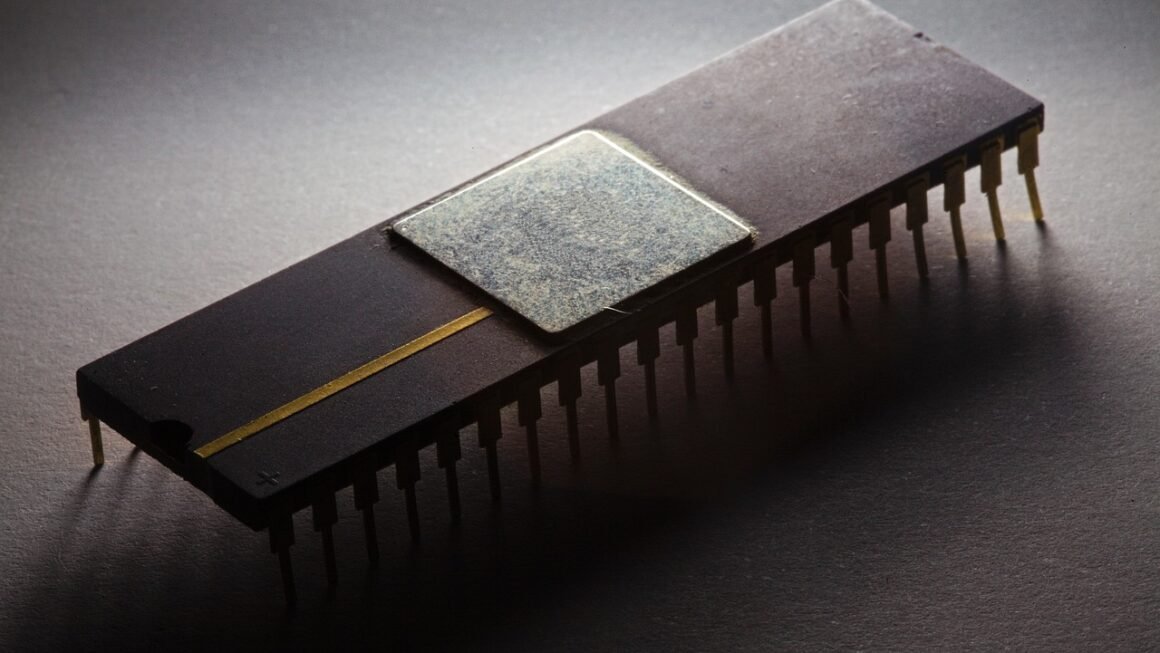Biotechnology. It’s a word that conjures images of futuristic labs, genetic engineering, and perhaps even science fiction. But the truth is, biotechnology is deeply intertwined with our everyday lives, from the medicines we take to the food we eat. This powerful field is constantly evolving, offering solutions to some of humanity’s biggest challenges in healthcare, agriculture, and environmental sustainability. Let’s delve into the fascinating world of biotechnology and explore its impact on our present and future.
What is Biotechnology?
Biotechnology is the use of living systems and organisms to develop or make products, or any technological application that uses biological systems, living organisms, or derivatives thereof, to make or modify products or processes for specific use. Essentially, it’s harnessing the power of biology to solve problems and create new possibilities.
A Multidisciplinary Field
Biotechnology is not a standalone discipline; it’s a collaborative effort that draws from various fields:
- Biology: Understanding the fundamental principles of life and living organisms.
- Chemistry: Applying chemical principles to biological processes.
- Genetics: Studying genes, heredity, and genetic variation.
- Engineering: Designing and building systems to utilize biological processes.
- Medicine: Applying biotechnological solutions to improve human health.
- Agriculture: Using biotechnology to enhance crop production and sustainability.
This interdisciplinary nature allows biotechnology to tackle complex problems with innovative solutions.
The Different Colors of Biotechnology
Biotechnology is often categorized by color, representing its application in various sectors:
- Red Biotechnology: Medical applications, including drug development, gene therapy, and diagnostics.
- Green Biotechnology: Agricultural applications, such as developing pest-resistant crops and improving crop yields.
- White (or Grey) Biotechnology: Industrial applications, like the production of biofuels, enzymes, and bioplastics.
- Blue Biotechnology: Marine and aquatic applications, including the development of new pharmaceuticals and biofuels from marine organisms.
- Yellow Biotechnology: Food production applications, for instance, the creation of fermented foods and beverages.
Understanding these categories provides a framework for comprehending the vast reach of biotechnology.
Applications in Healthcare
Red biotechnology, focused on medical applications, has revolutionized healthcare, offering new ways to diagnose, treat, and prevent diseases.
Drug Development
Biotechnology plays a crucial role in developing new and improved drugs:
- Biopharmaceuticals: Drugs produced using living organisms or their components, such as insulin for diabetes and monoclonal antibodies for cancer treatment.
- Recombinant DNA Technology: Creating genetically engineered organisms to produce therapeutic proteins, such as vaccines and growth hormones.
- Personalized Medicine: Tailoring medical treatment to an individual’s genetic makeup, allowing for more effective and targeted therapies.
For example, the development of mRNA vaccines for COVID-19 exemplifies the power of biotechnology in responding to global health crises. These vaccines use messenger RNA to instruct cells to produce a harmless piece of the virus, triggering an immune response.
Diagnostics
Biotechnology enhances disease diagnostics through:
- Molecular Diagnostics: Detecting specific DNA or RNA sequences to identify pathogens, genetic mutations, and biomarkers for diseases.
- Point-of-Care Diagnostics: Developing rapid and portable diagnostic tests that can be used at the patient’s bedside or in remote locations.
- Imaging Technologies: Using advanced imaging techniques to visualize tissues and organs at the molecular level, aiding in early disease detection.
The polymerase chain reaction (PCR) is a fundamental biotechnology technique used in molecular diagnostics. It allows for the rapid amplification of specific DNA sequences, enabling the detection of even trace amounts of pathogens or genetic mutations.
Gene Therapy
Gene therapy offers the potential to treat genetic diseases by:
- Introducing functional genes into cells to replace defective ones.
- Inactivating malfunctioning genes.
- Delivering therapeutic genes directly to the affected tissues.
Although still in its early stages, gene therapy has shown promising results in treating certain inherited disorders and cancers. For instance, some forms of spinal muscular atrophy (SMA) can now be treated with gene therapy, offering significant improvements in patient outcomes.
Applications in Agriculture
Green biotechnology focuses on improving agricultural practices and enhancing crop production.
Genetically Modified (GM) Crops
GM crops have been engineered to:
- Resist pests and diseases, reducing the need for pesticides.
- Tolerate herbicides, simplifying weed control.
- Improve nutritional content, addressing malnutrition.
- Increase crop yields, enhancing food security.
Examples include Bt corn, which produces its own insecticide, and Golden Rice, which is enriched with beta-carotene, a precursor to Vitamin A. While GM crops have faced some controversy, they have also contributed to increased food production and reduced pesticide use in many regions.
Precision Agriculture
Biotechnology enables precision agriculture by:
- Using sensors and data analytics to monitor soil conditions, crop health, and weather patterns.
- Optimizing irrigation, fertilization, and pest control based on real-time data.
- Developing crop varieties that are adapted to specific environmental conditions.
This data-driven approach allows farmers to make more informed decisions, leading to increased efficiency and reduced environmental impact.
Sustainable Agriculture
Biotechnology contributes to sustainable agricultural practices through:
- Developing biofertilizers that enhance nutrient uptake by plants.
- Creating biopesticides that are less harmful to the environment than synthetic pesticides.
- Promoting crop diversification and intercropping to improve soil health and reduce reliance on synthetic inputs.
By harnessing the power of biological processes, biotechnology can help create more sustainable and resilient agricultural systems.
Applications in Industry
White or grey biotechnology applies biological processes to industrial production.
Biofuels
Biofuels are renewable fuels derived from biomass, such as crops, algae, or waste materials:
- Ethanol: Produced from the fermentation of sugars and starches.
- Biodiesel: Produced from vegetable oils, animal fats, or recycled grease.
- Biogas: Produced from the anaerobic digestion of organic matter.
Biofuels offer a more sustainable alternative to fossil fuels, reducing greenhouse gas emissions and dependence on finite resources.
Bioplastics
Bioplastics are plastics made from renewable biomass sources, such as corn starch, sugarcane, or cellulose:
- Biodegradable plastics: Can be broken down by microorganisms in the environment.
- Bio-based plastics: Made from renewable resources but may not be biodegradable.
Bioplastics offer a more environmentally friendly alternative to traditional petroleum-based plastics, reducing reliance on fossil fuels and minimizing plastic waste.
Enzyme Production
Enzymes are biological catalysts that accelerate chemical reactions. Biotechnology is used to produce enzymes for a wide range of industrial applications:
- Food processing: Enzymes are used in baking, brewing, and cheese making.
- Textile industry: Enzymes are used for bleaching, dyeing, and finishing fabrics.
- Detergent industry: Enzymes are used to break down stains in laundry detergents.
The ability to produce enzymes on a large scale has revolutionized many industrial processes, making them more efficient and sustainable.
Ethical Considerations
While biotechnology offers immense potential, it also raises important ethical considerations that must be addressed:
Genetic Engineering
- Concerns about the safety and long-term effects of GM crops.
- Ethical issues surrounding gene editing technologies like CRISPR.
- Potential for unintended consequences and unforeseen risks.
Thorough risk assessments and regulations are crucial to ensure the responsible development and use of genetic engineering technologies.
Data Privacy
- Concerns about the privacy and security of personal genetic information.
- Potential for discrimination based on genetic predispositions.
- Need for clear guidelines on data sharing and usage.
Robust data privacy policies and ethical guidelines are essential to protect individuals’ genetic information and prevent misuse.
Access and Equity
- Concerns about the accessibility and affordability of biotechnological products and services.
- Potential for disparities in access based on socioeconomic status.
- Need for equitable distribution and affordable healthcare solutions.
Efforts must be made to ensure that the benefits of biotechnology are accessible to all, regardless of their socioeconomic background.
Conclusion
Biotechnology stands at the forefront of scientific innovation, offering transformative solutions to some of humanity’s most pressing challenges. From revolutionizing healthcare with new drugs and diagnostics to enhancing agricultural productivity and promoting sustainable industrial practices, its impact is undeniable. While ethical considerations must be carefully addressed, the potential benefits of biotechnology are vast and far-reaching. As the field continues to evolve, ongoing research and development, coupled with responsible regulation, will be crucial to unlocking its full potential and ensuring a healthier, more sustainable future for all. The key takeaways are clear: embrace the innovation, address the ethics, and foster equitable access to the benefits of biotechnology.



